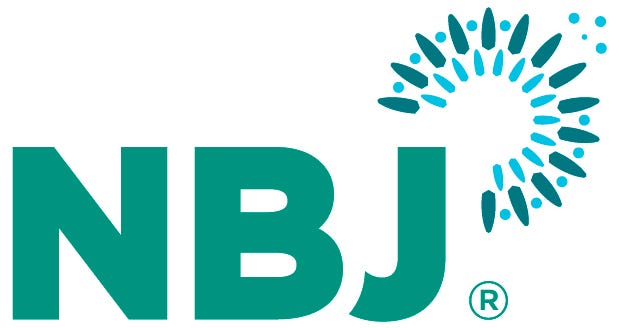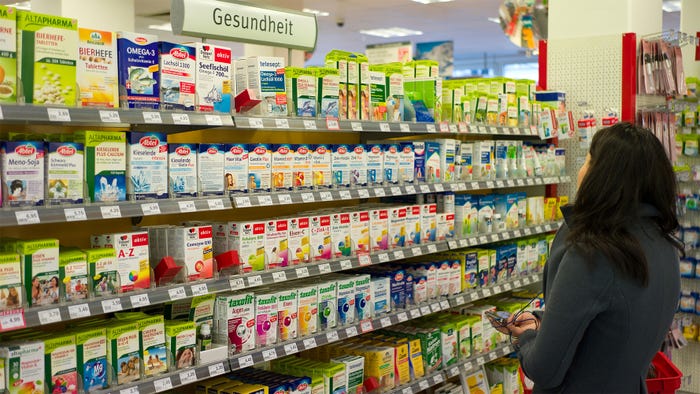
Navigating Europe’s dietary supplement regulations daunting but doableNavigating Europe’s dietary supplement regulations daunting but doable
The sale of supplements to Europe comes with unique challenges for U.S. brands. But using trusted partners or innovative self-serve regulatory solutions can help.
September 30, 2024

This article was originally published in Nutrition Business Journal's Global Market Overview Issue.
Expanding the global reach of your brand seems like a simple way to increase your revenue; however, many companies are discouraged by the regulatory hurdles that must be navigated in the pursuit of pastures new. Besides logistical challenges and the development of new partnerships with distributors, new regulatory frameworks are an unavoidable pain point for many companies. However, these perceptions may be unfounded or simply managed using trusted partners or innovative self-serve regulatory solutions.
The sale of supplements to Europe comes with unique challenges for U.S. brands. The significantly different EU and UK framework is multifaceted and complex. Despite the free movement of goods within the market being one of the keystones of the EU, differing interpretations and risk appetites of member states have led to a poorly harmonized internal market, where national provisions and processes often dominate. Add into this mix the EU-exit of the UK and the ever-growing regulatory divergence between the UK and the EU, and you will see that getting the right partner is key for success across the pond.
Formulation
The first step in the regulatory process should be an assessment on the feasibility of a formulation in the destination markets. Harmonization within the EU when it comes to formulations truly is a myth. Despite efforts to harmonize the permitted levels of vitamins and minerals in food supplements, there is still no agreement on the maximum levels, which has led to numerous member states implementing their own upper levels. One example of the disparity in this area can be seen with vitamin B6, which has an upper level of 0.9 mg, set by the German Federal Institute for Risk Assessment and an upper level of 12.5 mg, set in France. Thankfully, there is harmonization in the forms of vitamins and minerals that are permissible within the EU, but this list often excludes common U.S. forms of minerals, notably some amino acid mineral chelates. We have also seen divergence in the list of permitted forms in the UK, with fewer forms permitted in the UK than EU.
Significant variation is also present in the permissibility of “other substances” in the UK and EU, with some markets having well-evolved regulations for these ingredients with positive and negative lists, whereas other markets lack clear rules.
One area where Europe’s precautionary approach is laid bare is the novel foods regulation, which prohibits the sale of foods with no significant history of consumption in the UK and EU until they have undergone a safety assessment. This significantly impacts innovative products, which often contain novel ingredients and delivery systems. This can also impact commonplace ingredients on the U.S. market, such as monk fruit extract, which is a novel food in Europe. The novel foods regulation is harmonized within the EU, and the UK follows a similar process, but the lists of authorized novel foods in the EU and UK have diverged significantly since Brexit.
Some harmonization does prevail within the EU, particularly with regard to the inactive ingredients within a formula, as well as additives and flavorings. There are regulations in place that lay down the additives that may be used in supplements, and also the flavoring substances permissible in food. Similar regulations are in place in the UK, but the permitted ingredients differ between the UK and EU. One example of this divergence is the permissibility of the additive titanium dioxide (E171), which is now banned for food use in the EU but still permitted in the UK.

A woman shops for dietary supplements at a retail store in Germany. Credit: Alamy
Labeling compliance
Once you have a formula that is suitable for your intended markets, the next hurdle is labeling. General labeling requirements within the EU are well harmonized, and the general basis of food labeling is relatively harmonized with the UK following the UK’s adoption of the EU food labeling regulation on its exit from the EU. These labeling requirements differ significantly from those in the U.S., with differences including how ingredients lists are written, what claims can be made and even the product classification (food supplement (EU and UK) vs. dietary supplement (U.S.).
Beyond the general labeling requirements, many brands face difficulty navigating the national specificities for food supplement labeling. In the same way that some markets apply their own upper levels and permissions on substances, we also see label statements that are market specific. These label statements are sometimes written into law and thus clearly mandatory, but there is an increasing trend of authorities mandating warnings based solely on the outcome of scientific opinions. In theory, this is reasonable, as all food must be safe for use in accordance with the directions for consumption. The difficulty for brands is that this necessitates that they stay abreast of a wide range of scientific sources to ensure their ongoing compliance, and the lack of regulatory update in these markets makes it difficult for a well-meaning brand to be completely sure they are compliant in that market.
Recycling labeling within the EU market marks another challenge. The introduction of national recycling iconography, such as the Triman logo in France, adds to the complexity of a new market launch. Furthermore, the introduction of unique recycling logos to a multilingual product label occupies significant real estate on the packaging and may limit the number of markets into which a product can launch.
The suitability of claims (or lack of) for the EU market is a reality that many U.S. brands must come to terms with. The health claims framework in Europe is based predominantly on a positive list of claims that can be made. Making health claims for substances that do not have an authorized claim is not permitted. A strange exception to this rule applies to botanical claims that are “on-hold.” These on-hold claims have not been assessed, so are neither approved nor rejected. While these claims are on-hold, brands are permitted to use the claim on the condition that they can substantiate that the ingredient provides the claimed effect, and they meet any conditions that are included in the list of on-hold claims. With all claims, caution must be taken when nearing the medicinal borderline, as medicine regulators may challenge a product on the basis it makes a medicinal claim. This borderline can be “crossed” by using seemingly innocuous words such as “boost” or by referring to medical conditions such as “anxiety.”
On top of all that comes the matter of translation. This may seem to be the simplest part of labeling, but it proves incredibly complicated. Leaving aside the national specific warnings that prevent you from simply translating your source copy into the desired language, there are many ways to introduce error into your translated labels. A translation as seemingly simple as “ingredients” into German may result in the word “inhaltsstoffe,” but this would lead to a noncompliant label as the correct term defined in law is “zutaten.” There are other more complex examples where a nonregulatory translation can result in noncompliant label copy for your destination market and, ultimately, the inability to market that product.
Notifications
Once you have your product labeled and ready for Europe, the final step before marketing is often the completion of a pre-market notification. A pre-market notification is a process where certain information about a product is shared with the competent authority of the market you are selling into. The information that is required by the authority differs by territory, but generally they will ask for a label, details of the EU food business operator (FBO) and formula information. In theory, this is a notification and not a registration, meaning that it should be a “do and tell” interaction and not require you to wait for permission to market the product. However, authorities are increasingly using this procedure to review, provide feedback and, sometimes, prevent altogether the marketing of certain supplements. Given this increasing trend of authority oversight, it is imperative that the product compliance is assured prior to product notification.
Some retailers and marketplaces are now requesting proof of product notification in markets where it is a requirement as some level of reassurance that the product is compliant. Notification is not mandatory in all markets, so some retailers and marketplaces instead ask for evidence that the company has a HACCP (hazard analysis and critical control point) plan in place, as this is a mandatory requirement for all food businesses in the UK and EU.
Hiring a guide
The European regulatory framework is significantly different to that of the U.S. and lacks the internal market harmonization that the EU was intended to implement. The national rules regarding formulation and labeling leads to a vast and complex regulatory landscape that is difficult to navigate, and the notification procedures that are fast-becoming pre-market authorizations ensure that the national rules are upheld.
Altogether, this makes the EU an incredibly challenging market to operate in, but only if you don’t have the right help. Traditionally, expert consultancies situated in each market would aid brands looking to launch in Europe, but we are now seeing a rise in innovative regulatory solutions such as The RegTech Tool from Rubicon Bridge that simplifies this regulatory environment and empowers brands to ensure the initial and ongoing compliance of their products.
The moral of the story is that food supplement regulation may seem to be an overwhelming prospect at first glance, but by partnering with in-market experts and harnessing their knowledge and systems, you can access this exciting and growing market.
Daniel Hibbitt is the digital transformation director at Rubicon Bridge.
Subscribe to Nutrition Business Journal for more industry insights.
About the Author
You May Also Like



